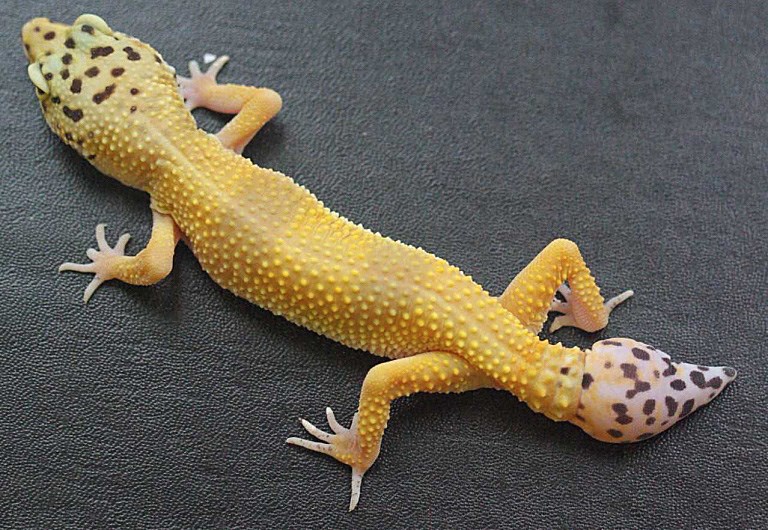Understanding spinal cord treatment may lie within common pet gecko.
A University of Guelph researcher is the first to identify the type of stem cell that enables a gecko to regenerate its tail and may hold significant promise for future spinal cord treatment in humans.
A gecko’s tail includes part of the spinal cord – unique because it extends outside the body and has the ability to re-grow itself in a month’s time in the case of detachment. Geckos typically “drop” their tails as a defense mechanism against predators as, once detached, it continues to flop around long enough for the gecko to escape unharmed.
Biomedical sciences professor Matthew Vickaryous and his research team have been studying leopard geckos since 2010, with particular focus on their regenerative abilities of the central nervous system.
“We knew that geckos’ spinal cords could regenerate [and they’re] really good at healing wounds anywhere on their body,” said Vickaryous, adding that until now, they didn’t know which cells were responsible for the feat.
“The overall anatomy in the spinal cord of a gecko tail is very similar to the human spinal cord,” he said. “We wanted to understand and look at how that can help human medicine.”
Vickaryous credits PhD student Emily Gilbert’s deep interest in spinal cord treatment as a force behind the research and their subsequent find.
Gilbert developed a plan to specifically focus on what the spinal cord in the tail was doing, he said.
They examined the tail in various stages – original tail before detachment, tail after detachment, and then the new and fully-regenerated tail. They eventually learned that the spinal cord in the tail contained a large number of stem cells and proteins which support stem cell growth – known as the radial glia – and directly responsible for regeneration.
Humans respond to injury by making scar tissue rather than new tissue, Vickaryous explained, adding that the scar tissue seals the wound quickly and prevents regeneration.
“As adults, we don’t have radial cells – as we get older, we lose them. It’s probably part of the explanation as to why we’re so bad at repairing spinal cord injuries.”
There are many complex issues at play when it comes to the spinal cord, and injuries tend to have devastating impacts on humans as we have very little ability to replace damaged tissue.
Vickaryous said that by using a common reptile such as the leopard gecko in the lab (bred in captivity and easily managed), they can easily simulate a fairly typical gecko occurrence by pinching the gecko’s tail, which causes it to fall off. Once detached, the area of the tail loss begins to repair itself, eventually leading to new tissue formation and a new spinal cord.
“We can look at spinal cord of the tail [without] injuring the gecko’s body as [might occur] in a study of mammals. They drop their tail readily with no harm done to the gecko.”
Looking toward the future, Vickaryous said he has no false notions about solving a great medical science mystery – but the discovery adds a piece to a very complex puzzle.
“The spinal cord is quite complex – there are many different cell types in there, and we’re only beginning to appreciate what’s going on.”
The study was recently published in the Journal of Comparative Neurology and is part of a series of investigations; the next phase will examine how the gecko is able to make new brain cells.
